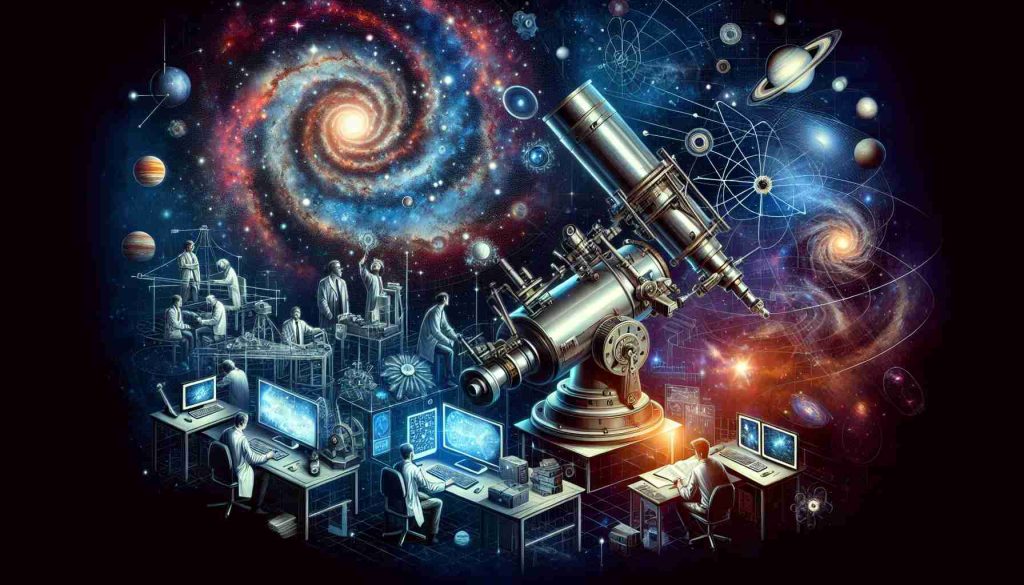Planetary Parade Lights Up the Night Sky
This month, a stunning celestial event unfolds as six planets align in the night sky, creating a breathtaking spectacle known as a planetary parade. This rare occurrence allows viewers to observe Venus, Mars, Jupiter, Saturn, Neptune, and Uranus, with most of them visible to the naked eye.
Planetarium experts explain that these alignments result from a unique perspective in our solar system. As the planets orbit along a shared plane, known as the ecliptic, they can appear grouped together, though not in a perfect line. This event is not unprecedented; similar parades have occurred before, but this month’s lineup offers a more vivid display.
For skywatchers, Venus, Mars, Jupiter, and Saturn are visible without any special equipment, while Uranus and Neptune require binoculars or a telescope. Observers are particularly excited about Mars, which shines brightly in the sky, positioned directly opposite the Sun. Venus and Saturn also come into close proximity, appearing just two degrees apart from each other.
The best time to witness this astronomical wonder is during any clear night throughout the month. Stargazers should look towards the southern horizon a few hours after sunset. Notably, January 21 has been highlighted as the prime date for optimal viewing.
Finally, downloading stargazing apps can enhance your experience, helping you pinpoint which planets are visible as they grace our sky. Don’t miss this celestial parade!
Beyond the Celestial: The Wider Implications of Planetary Alignments
The recent planetary parade is not merely a spectacular visual event; its implications resonate deeply within our society, culture, and economy. The alignment serves as a powerful reminder of humanity’s intrinsic connection to the cosmos, sparking curiosity and a sense of wonder. This enthusiasm can lead to increased interest in science education, especially for younger generations, fostering a culture that values inquiry and exploration. The prevalence of astronomy clubs and public outreach programs can initiate discussions on space and science, magnifying public interest in these fields.
Moreover, the excitement surrounding such events has economic ramifications, particularly for tourism and stargazing. Observatories and planetariums may see a surge in attendance, and local businesses could benefit from increased visitors seeking the perfect spot to view the celestial exhibit. In the digital age, platforms for stargazing are receiving renewed attention, promoting the growth of mobile applications and technology-driven services.
However, these astronomical events also present an opportunity to examine our planet’s health. As light pollution remains a pressing issue, the contrast of a celestial show encourages discussions on urban sustainability and environmental preservation. Awareness of the night sky can lead to advocacy for darker skies, further bridging the topics of astronomy and environmentalism.
In conclusion, as we gaze into the cosmos, the planetary parade offers a moment to reflect not only on the beauty of our universe but also on how it can inspire change in society and protect our planet for future generations.
Don’t Miss This Incredible Planetary Parade: A Guide to Optimal Viewing
Planetary Parade Lights Up the Night Sky
This month, stargazers are treated to a spectacular celestial event—a planetary parade featuring six distinct planets. This rare alignment of Venus, Mars, Jupiter, Saturn, Neptune, and Uranus invites enthusiasts to explore the night sky, as many of these planets are visible with the naked eye.
Understanding the Phenomenon
Planetarium experts clarify that these alignments occur as a result of a unique perspective from Earth. The planets orbit the Sun along a shared plane called the ecliptic, which can create the visual effect of planets clustering together in the sky. This month’s parade promises vivid visibility, with planets readily observable, particularly Mars, which is shining brilliantly due to its positioning directly opposite the Sun.
Best Viewing Practices
For those eager to catch a glimpse of this astronomical event, note the following tips:
– Visibility: The four accessible planets—Venus, Mars, Jupiter, and Saturn—can be seen without any special equipment. However, Neptune and Uranus may require binoculars or a telescope for clear observation.
– Optimal Date: January 21 has been identified as the best opportunity for the highest visibility of the planetary alignment.
– Location: Look towards the southern horizon a few hours after sunset on clear nights throughout the month.
Enhancing Your Stargazing Experience
To make the most of your celestial observations, consider these tools:
– Stargazing Apps: Apps such as SkySafari or Star Walk can help you identify visible planets in real time, offering guidance on their locations against the backdrop of the night sky.
Pros and Cons of Planetary Viewing
Pros:
– Offers a unique and breathtaking view of multiple celestial bodies.
– Engages observers of all levels, from beginners to experienced astronomers.
– Requires minimal equipment for most planets.
Cons:
– Weather-dependent; cloudy nights can obstruct the view.
– Neptune and Uranus require additional equipment for visibility.
Upcoming Astronomical Trends
This planetary parade is part of a broader trend of increasing accessibility to astronomy. As technology advances, more individuals can participate in stargazing with ease, leading to a growing community of space enthusiasts.
Conclusion
This month presents a magnificent chance for both novice and seasoned skygazers. With the right preparations, you can enjoy the thrilling experience of witnessing a planetary parade in the night sky. For more information on astronomical events, tips on stargazing, and purchasing equipment, visit Space.com.
















